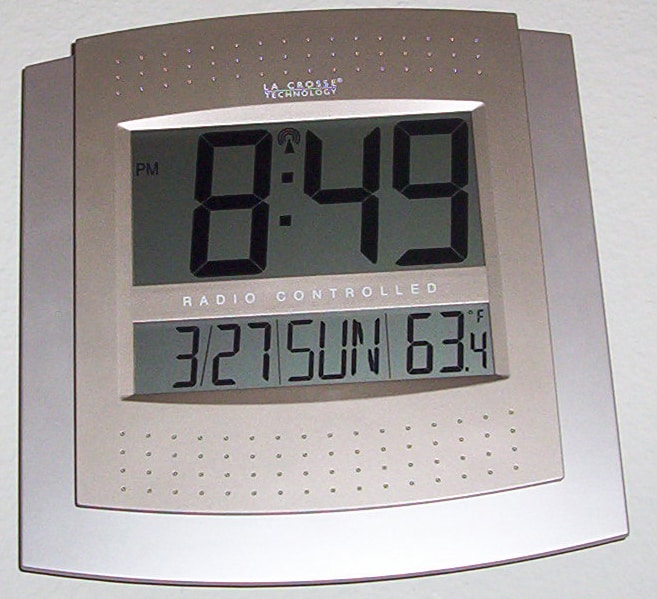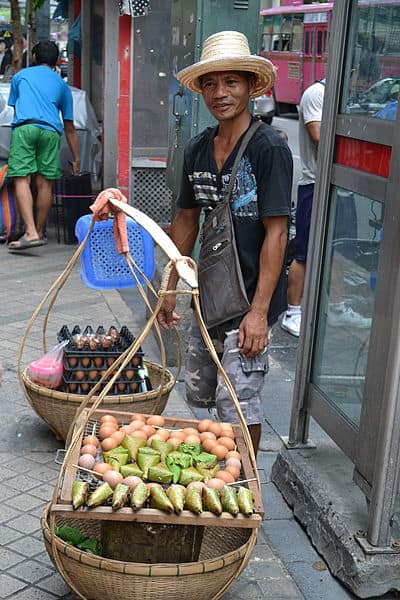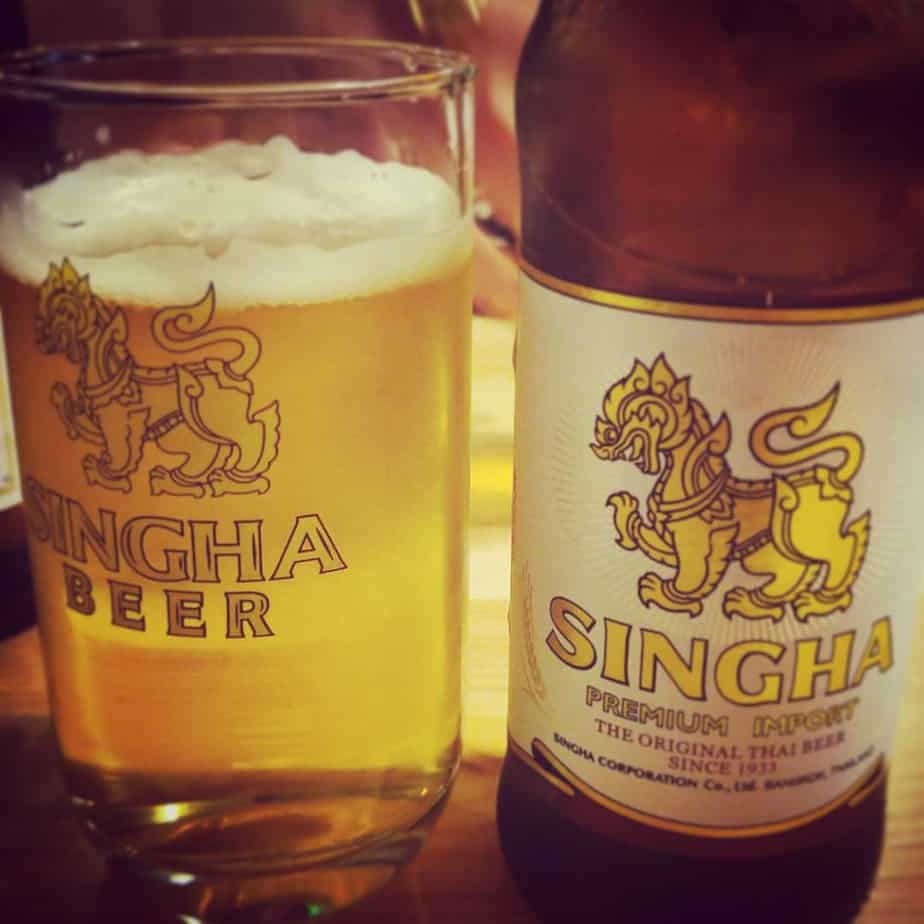Top Ten Fun Facts about Thai People
Thailand has been one of the most visited places of recent decades. Anyone who has been to the tropical, SE Asian country may consider that the people there have an almost unique character and approach to life.
If you have never been to Thailand before, at least you will have heard something about it. Maybe you already have some idea about Thai people and have experienced their ways.
Well if you have or if you haven’t — some of them may surprise or amuse you, so let’s dig a bit deeper and present you with ten fun facts about Thai people!
1. Thai People are often late
Anyone visiting Thailand might notice fairly early on in their trip that the terms ‘early’, ‘on time’ and ‘late’ don’t necessarily bear the same context to Thai people as they might to someone from elsewhere.
There are many possible suggestions, some more feasible than others, as to why Thais are generally lax when it comes to time-keeping (it’s because of the traffic; it’s because of the heat and having to move slower, etc.,) but it is a fact that being on time doesn’t hold the same kind of relevance as it might in other countries and cultures across the globe.
Anyone who has spent any time working in Thailand will have noticed that the majority of people do actually turn up at times that might well be considered as ‘late’ rather than ‘on time’ back home.
To put a finer point on it, turning up at the actual designated time is considered ‘early’, whereas rolling in 15-30 minutes after the designated time is ‘on time’. This is normal practice for high volumes of people, and you would have to be appearing 1 hour plus after the designated meeting time to actually be considered late in real terms.
2. They are frequent eaters
Snacking (gin len, or ‘play eating’in Thai) seems to be a major focal point of the Thai lifestyle.
This might be due to the street vendors who are seemingly everywhere, selling everything from cut fruit to barbecued chicken feet to Thai desserts and other sweet snacks.
Then there are the ‘pop-up’ restaurants that also line the streets that many people pass on their way to work, and then the supermarkets (and of course the 7-elevens) have wide varieties of convenience food and such like. Put simply, finding snacks could not be easier anywhere than in Thailand.
Whether it be cut fruit, chopped fried chicken, barbecued pork on a stick (moo ping) or one of the many sweet snack options available in Thailand, there is certainly no shortage of food, which is why most Thai people are likely to turn up at work (or anywhere) laden with small, plastic bags full of various snack options (the logic being that you never want to be too far away from food!)
Also, if you are invited to someone’s house for any reason, one of the first things to appear in front of you is likely to be some form of snack. There’s just no lack of food wherever you may be in Thailand!
3. All Thai people are ‘Family’
Not family in the strictest sense, but the Thais do use specific personal pronouns associated with family with everyone, as they are also designators of age and also pecking order etc., with seniority trumping all the others in the land of smiles.
This affects the way that people address each other, with strict etiquette being adhered to by the majority of people. The fact that it is not considered acceptable to call anyone more senior (in age or rank) by their first name, the appropriate pronoun being applied instead.
Whereas in English, for instance, the generic pronoun ‘you’ would likely be used with no specific regard to the age or place of a person in the societal scheme of things, the use of pronouns such as ‘Pee’ (older brother/sister) and ‘Nong’ (younger brother/sister), along with ‘Pa’ for (elder) Aunt, ‘Lung’ for (elder) Uncle, ‘Yai’ (for someone considered to be ‘Grandmother’ age) and so forth is appropriate.
So everyone in Thailand is family!
But Thais do sometimes use these terms with foreigners – so don’t be confused or offended, it is usually intended as good manners.
4. Thais are pretty superstitious
The majority of Thai people are raised as Buddhists, although the ‘Thai’ version of Buddhism does have something of its own flavour.
A large proportion of this flavour is steeped in superstitions that come from different influences outside of Buddhism, with some related to the animalism and spirit worship prevalent in other close ancient cultures like those in Laos and Cambodia (hence the ‘spirit houses’ that can be seen outside most properties and businesses in the country), as well as a fear or fascination of the afterlife and any supernatural occurrences that are seemingly linked to it.
These superstitions, in the same way as they do for the Chinese, also relate to particular actions being undertaken (or not) on certain days – the Thais follow the belief in auspicious and inauspicious days for particular events (even haircuts!) to the letter, sometimes involving monks to help with the planning of a specific event.
So bear this in mind if you think your new Thai friends are acting in ways that might seem strange for any reason.
5. Thais are shy – especially with other languages
It’s a fact – and most Thais would admit it – but Thailand does not rank well as a user of English and other languages in the global communication stakes.
In the ASEAN rankings, Thailand’s level of English communication skill (and other languages) is low, and also developing at a much slower pace than in some neighbouring countries such as Vietnam.
This has not been for want of trying.
As we have said before in other posts, the average Thai person on the street is unlikely to be (or to even consider themselves) a user of the English language. And why is this a fun fact about Thai people? Because if they can’t understand you they may just smile!
Anyone who has ever been on a bus before in Thailand will have noticed how the seat next to them is the only vacant one in the whole bus – guaranteed if you are holding a map (this has been a long-running joke amongst Thai people).
The fact that Thai culture has always traditionally been rather insular and closed to the rest of the world may explain this to some degree, along with the obvious, ongoing issues with the standard of education in the country.
And a further contributing factor to any prevailing shyness or reticence in interacting with foreigners is that like much of SE Asian culture, Thailand’s is still very much an ‘indirect’ one compared to the much more direct ‘western’ style of interaction and communication, so it is often unlikely for anyone to take the lead.
This is all changing slowly of course, mainly due to more travel and overseas study, but it will take a while yet before any real giant steps in this area are going to become more visible.
6. The ‘Wai’ is done in different ways to different people
The traditional Thai greeting (which also has many other roles such as thank you), may look like a fairly straightforward affair.
Hands pressed together, head down lightly, hands…where?
In very subtle ways, Thai people wai differently, depending on who or what they may be doing it for. This could relate to seniority (age or rank), or a host of other factors.
Many foreigners who visit Thailand are eager to show their respectfulness with a solid grasp of the local customs such as the wai. The truth is though,few people actually get it right, and sometimes it may seem highly confusing – especially when you go to wai and they shake your hand, while on another occasion the opposite happens.
As a foreigner it is more a case of ‘can’t do any right for doing wrong’ when it comes to any attempt at a wai. Of course the Thais have it down to a fine art, with the hands being pressed together and the head dipping to varying degrees, according to level of respect being offered.
All very subtle, and more than just a little complex. Usually though, it is not expected for foreigners to get too involved in all of that — so you may be forgiven—but there are also definitely times when you will be asked to, for instance when being introduced to a much older person
Another fun fact about Thai people!
7. The Thais put ice in their beer
Yes that’s right – not so much ‘put some beer on ice’ as ‘put some ice in the beer’.
It might be the TROPICAL temperatures. It might be habit – ice buckets do tend to frequent most tables in bars, restaurants and cafes in Thailand, even for non-alcoholic drinkers.
People here just like to ‘cool off’, and dropping a few chunks of ice into glasses and then pouring just about anything over them is close to heaven for many a Thai. It is commonly done with whiskey, but also with many other beverages like brandy or red wine usually considered ice ‘no-no’s’ by most people.
In beer, putting ice may be a definite no-no for drinkers, while for others it may turn out to be something of an acquired taste, although there is always the question of the hygiene of the ice to be considered by many first-time visitors.
8. They love dogs
Apparently one of Thailand’s famous kings loved dogs, even passing a law making it illegal to hit one. This was a sentiment taken to heart by many Thai people, which made the dog a common domestic house pet in the country, although unfortunately this trend was largely responsible for the now huge numbers of stray dogs on the streets.
These dogs, known as ‘soi dogs’ (street dogs), are everywhere in Thailand. They are often not in the best of condition, and rabies is not as uncommon as people might believe. The dogs survive as there are always those who are likely to feed a dog if they see it.
The regular ‘dog-feeders’ can be seen going around small neighbourhoods sometimes, putting down left-over scraps largely containing rice, for whole packs of dogs on some streets.
Everyone seems to know that the dogs are a problem (due to ever-increasing development they have to keep moving), and in some areas they can be a real issue, especially during mating season.
Nevertheless, the government seems unconcerned about taking any real measures to ‘clean up’ the city dog issue, so it is still left to the kind-hearted dog feeders to ensure supplies of food and water.
9. Thai people love the lottery!
It is not difficult to know when ‘lottery day’ is drawing close in Thailand.
You may notice growing hordes of people stopping to look and gather around the ‘ticket boards’ of the numerous lottery ticket sellers that parade the streets either on foot or on bicycles prior to the draw date.
For many people in Thailand it is not so much a hobby as an obsession to be constantly trying to find ways of coming up with those lucky numbers.
The ticket sellers ply individual tickets (around 80-100 baht) or books of them, and they contain 2 sets of numbers that may bring financial rewards in various ways, of anything between a few hundred baht and millions!
The lottery is an official government one (although obviously ‘underground’ versions exist), with the draw date being set on seemingly auspicious days whenever possible. Both big and small wins feature in the news and gossip, particularly the huge windfalls that many people are somehow able to pull off.
Get yourself a ticket on Thai Lottery day – you never know your luck!
10. Thais love sweet things
Something that has to be said for the Thais is that they do like things sweet!
A typical example of this would be the traditional Thai tea and coffee, sold by vendors on the streets and in malls. The coffee is likely to be sweetened with sugar, with added (sweetened) carnation milk, and a smidgeon of (sweet) syrup just to make sure of that sweetness. The tea is made along somewhat similar lines.
So if you are not a sugar fan, you might need to point that out to some vendors of food and drink (the fiery ‘som tum’ papaya salad is another instance when spoons full of sugar may be added) – mai sai nam tarn (khap/ka) means don’t put any sugar in — and this is a phrase that may come in handy from time to time!
Planning a trip to Paris ? Get ready !
These are Amazon’s best-selling travel products that you may need for coming to Paris.
Bookstore
- The best travel book : Rick Steves – Paris 2023 – Learn more here
- Fodor’s Paris 2024 – Learn more here
Travel Gear
- Venture Pal Lightweight Backpack – Learn more here
- Samsonite Winfield 2 28″ Luggage – Learn more here
- Swig Savvy’s Stainless Steel Insulated Water Bottle – Learn more here
Check Amazon’s best-seller list for the most popular travel accessories. We sometimes read this list just to find out what new travel products people are buying.


























